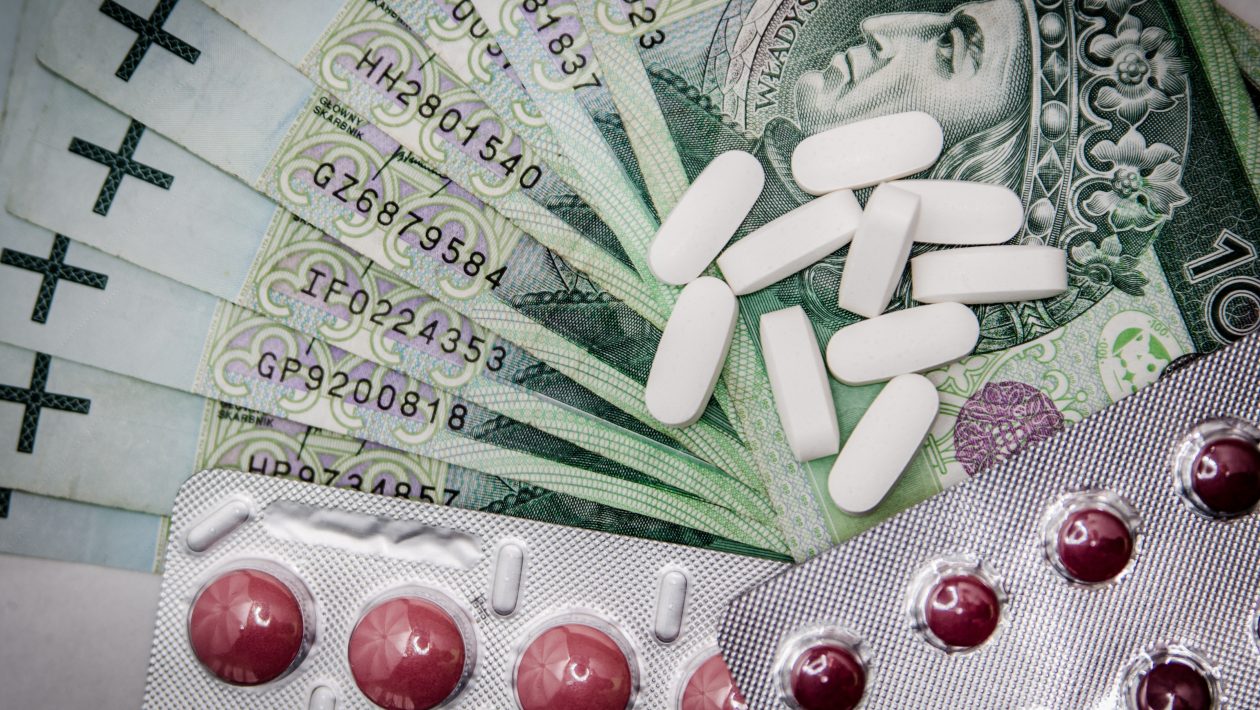The effect of drugs we consume last longer than we know. While some of them impact immediately, they still remain in our blood stream. It is only natural to wonder how long does oxycodone stay in your system if you consumed this and have to present for test. Since there is no one-size fit all answer to this, here is a detailed guide for complete assistance.
So, how long does oxycodone stay in your system? It depends on a variety of factors, including the type of oxycodone used, the dosage used, your age, metabolism, and your liver and kidney condition.
Table of Contents
What is Oxycodone?
Oxycodone is a pain reliever used to treat moderate to severe pain. Oxycodone is frequently prescribed for relieving pain caused by surgery, cancer, injuries, and other medical disorders.
However, it is a strong pain killer and it is only recommended when other pain killers don’t work. Since it is a narcotic, it has the potential to be addictive. It can also turn out to be deadly if used in excess.
Oxycodone can also be used to treat chronic pain. However, it is important to consult your doctor regarding the risks and benefits of using oxycodone for long-term pain management.
Oxycodone is available in tablet, pill, liquid and extended-release tablet forms. The type of oxycodone that is best for you will be determined by your specific requirements and circumstances.
Oxaydo, Oxy IR, Roxybond, and Roxycodone are some brand names of immediate-release oxycodone. Brand names for restricted or extended-release versions include OxyContin (controlled-release) and Xtampza (extended-release).
Oxycodone functions by preventing pain impulses from reaching your brain. It might also make you feel drowsy and relaxed.
It is a potent medication that must be used exactly as prescribed by your doctor.
Excessive oxycodone use can result in significant negative effects, including overdose and death.
If you have any queries or concerns regarding oxycodone, speak with your doctor.

Oxycodone Substances for Pain Relief
Oxycodone is a strong pain reliever that is usually recommended for severe pain. It is a restricted substance, which means it may be abused and become dependent.
Oxycodone is available in two strengths: l
- Long-acting: often used twice a day
- Short-acting: needed every 4-6 hours
Under the trade name Percocet, short-acting oxycodone is also offered in conjunction with aspirin.
It is critical to understand the distinction between long-acting and short-acting oxycodone and to take the medication exactly as prescribed by your doctor.
Do not take more oxycodone than recommended, and do not take it more frequently than suggested. Taking too much oxycodone can not only be addictive but fatal.
How Does Oxycodone Work?
Oxycodone is a very effective pain reliever that works by altering how the brain and nervous system respond to pain. It accomplishes this by binding to opioid receptors in the body, therefore blocking the sensation of pain.
The dosage of oxycodone required for pain treatment differs from person to person. Doctors often begin with a low dose and then increase it until the pain is under control.
You should feel the effects of oxycodone within 20-30 minutes of taking it. The medicine reaches its peak blood concentration one to two hours after administration, or three to four hours if an extended-release version is used.
How Long Does Oxycodone Stay in Your System?
Depending on the type of the medicine you take, oxycodone might linger in your system for varying amounts of time.
If you use oxycodone, you may be forced to take a drug test on occasion. Employers, doctors, and even courts can require drug testing to determine the quantity of a drug in your system.
Oxycodone detection happens in routine drug tests such as urine, blood, saliva, and hair. The length of time a test can detect oxycodone in your system depends on the type of test used.
Interestingly, short or long-acting form of the drug also shows variant results.
The following are some general criteria for how long oxycodone can be detected during drug testing:
| Type of Test | Duration |
| Blood Test | Up to 24 hours |
| Saliva Test | 1-2 Days |
| Urine Test | 2-4 Days |
| Hair Follicle Test | Up to 90 Days |
To find out how long oxycodone remains in your system, you must test its half-life. The half-life of oxycodone is the amount of time it takes for your body to clear half of the substance.
The half-life of oxycodone immediate-release formulations is 3.2 hours. Also, the half-life of controlled or extended-release formulations is 4.5 to 5.6 hours.

Factors that influence the half-life of Oxycodone
In general, it takes many half-life for a medication to fully eliminate from our body. Since medication metabolization changes from person to person, the half-life of oxycodone may vary between individuals.
The following elements determine a drug’s half-life:
Gender and age
Individuals 65 and older had 15% greater oxycodone blood concentrations than younger persons. As a result, older folks require more time to eliminate oxycodone from their systems. Again, oxycodone concentrations in healthy females are 25% greater than in males.
Duration
When used on a regular basis, oxycodone might build in fatty tissues, leading in a longer period for the medication to leave our body.
Alcohol
When you consume alcohol while taking oxycodone, the effects intensify and the half-life in the system lengthens. They also provide a danger of deadly overdose, thus combining the two can be detrimental.
Other Medicines
Other drugs may make oxycodone breakdown more difficult, resulting in respiratory depression, hazardous drug interactions, and other significant complications. It is advisable to avoid using oxycodone if you are simultaneously taking the following medications:
- Macrolide antibiotics
- Azole antifungal agents
- Protease inhibitors
Kidney and liver function
Oxycodone has a longer half-life in your bloodstream if you have kidney or liver issues.
Individuals with liver disease have a 2.3-hour increase in half-life, whereas kidney issues produce a 1-hour increase in oxycodone’s half-life.
Side effects of Oxycodone
Oxycodone is an effective pain reliever, but it can have some unpleasant side effects. Here are a few examples of the most common:
Dizziness and drowsiness
When you first start taking oxycodone, you may experience drowsiness and dizziness.
Vomiting and nausea
Nausea and vomiting can also be caused by oxycodone. This is especially prevalent when you initially start taking the medication.
Addiction
Given that oxycodone is a narcotic, it is likely to be addictive. If you use oxycodone for an extended length of time, you may become physically dependent on it. This implies you’ll have to take it in order to avoid withdrawal symptoms.
Overdose
Taking too much oxycodone might result in a lethal overdose. Overdose symptoms include poor breathing, disorientation, and unconsciousness.
Withdrawal Symptoms
If you stop taking oxycodone abruptly after using it for a period, you may have withdrawal symptoms. Common withdrawal symptoms include:
- Restlessness
- Muscle cramps
- Sweating
- Fast breathing
- Increase in heart rate
- Joint pain
Oxycodone addiction
Oxycodone is an effective pain reliever, but it may also be addictive. The US government has identified oxycodone as a Schedule II prohibited drug, which indicates it is highly addictive and has a high potential for misuse.
Even when taken as directed, oxycodone has the potential to become addictive. This is due to the drug’s ability to generate sensations of exhilaration and relaxation. Also, the body might develop a tolerance to oxycodone over time, requiring users to take more of the medication to obtain the same benefits.
Addiction to oxycodone can have a variety of harmful outcomes including:
- Sinus infections that last a long time
- Extensive headaches
- Obstructive sleep apnea
- Lung infection
- Swallowing issues
- Liver issues
- Kidney function is impaired
If you or someone you know is addicted to oxycodone, it is essential that you get expert treatment. There are several therapy choices available, and the optimal treatment for you will be determined by your specific requirements.

How to Get Rid of Oxycodone Addiction?
Addiction to oxycodone is a severe problem, but it is manageable. There are several treatments available, and the most effective one for you will be based on your specific requirements and conditions.
Seeking expert assistance if you are addicted to oxycodone is one of the most crucial things you can do. A doctor or addiction expert can help you in developing the best treatment plan for you.
Typically, oxycodone addiction treatment consists of a mix of medicine and counseling.
Medication can help minimize oxycodone withdrawal symptoms and cravings. There are a variety of drugs available to treat oxycodone addiction, including:
- Methadone is an opioid with a lengthy half-life that can aid with cravings and withdrawal symptoms
- Another long-acting opioid that helps treat oxycodone addiction is buprenorphine
- Naltrexone is a drug that prevents the effects of opioids. It can be used to keep you from relapsing after you’ve finished detox and therapy
Therapy might help you understand the underlying causes of your addiction and develop coping techniques to prevent relapse. There are several forms of therapy available to address oxycodone addiction, including:
- Cognitive-behavioral therapy (CBT): CBT assists you in identifying and changing the thoughts and behaviors that contribute to your addiction.
- Group therapy: It allows you to connect with other individuals who are also dealing with addiction.
- Family counseling: This might help you in repairing connections harmed by your addiction.
Treatment for oxycodone addiction might be difficult, but recovery is achievable. Please get treatment if you are addicted to oxycodone. There are people who care about you and want you to be happy.
Final Thoughts
Oxycodone is a potent pain reliever that can remain in your system for a long period. The duration it lasts is determined by a variety of factors, including your dosage, metabolic rate, and your overall health.
If you’re using oxycodone for pain, you should know how long it remains in your system. This information can help you in learning how to take oxycodone safely and ethically.
While oxycodone can be extremely beneficial for patients suffering from severe pain, it is critical to be aware of the potential adverse effects, the danger of tolerance and dependency, and the chance of withdrawal symptoms.
If you are worried about the hazards of oxycodone or believe you may be addicted to it, consult your doctor.
Keep in mind that you are not alone. There are people who are concerned about you and want you to get better.
FAQs
1. What is oxycodone and how long does it stay in your system?
Oxycodone is a strong pain killer that can stay in your system for up to four days.
2. How long does oxycodone 5 mg stay in your system?
A 5mg dosage of oxycodone is usually removed from the blood within 24 hours. However, it can be detected in the urine or saliva for up to 4 days.
3. How long can oxycodone be detected in your urine?
Typically, oxycodone may be identified in urine for 2 to 4 days following your last dose.
4. How does oxycodone dose impact how long it remains in your system?
Higher oxycodone dosages tend to linger in your system longer than lesser amounts. A 5mg dosage of oxycodone may be removed faster than a greater dose.
5. Is there a difference in duration of action between immediate-release and extended-release?
Yes, extended-release formulations may have a longer duration of action than immediate-release ones, which can affect how long they stay in your system.
6. Are there any dangers to having oxycodone in your system for a long period of time?
Long-term oxycodone usage can raise the risk of tolerance, dependence, and addiction, highlighting the significance of cautious and regulated use.

